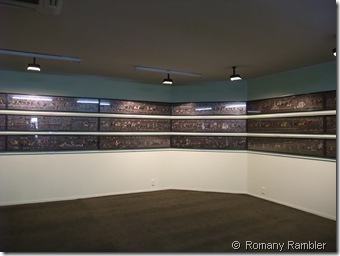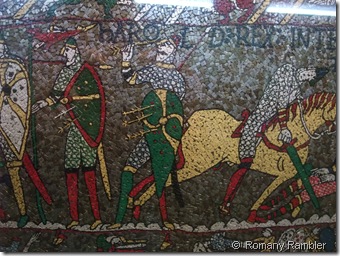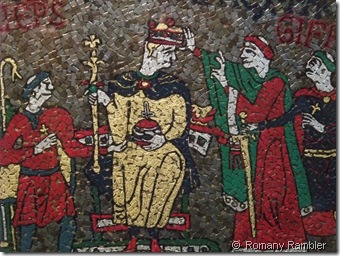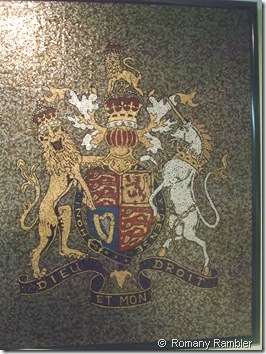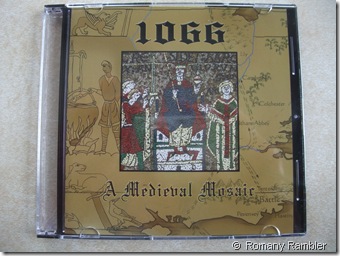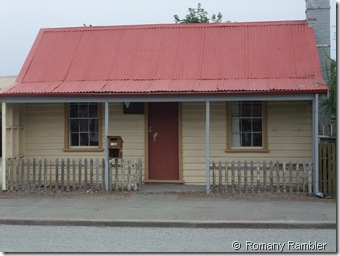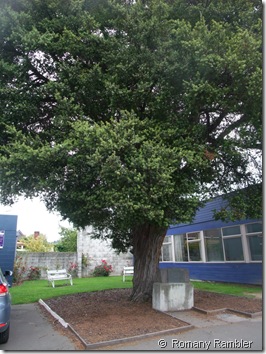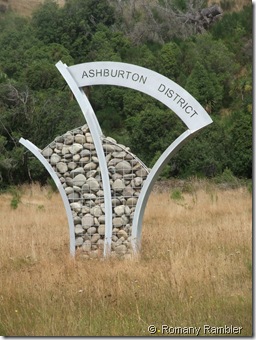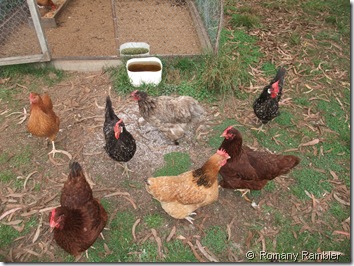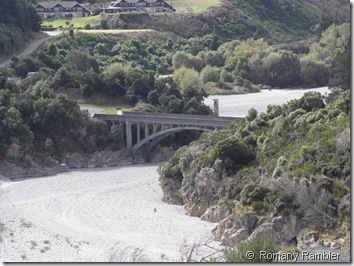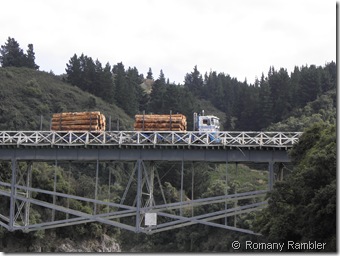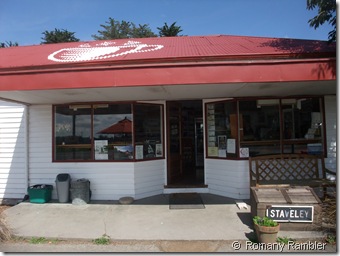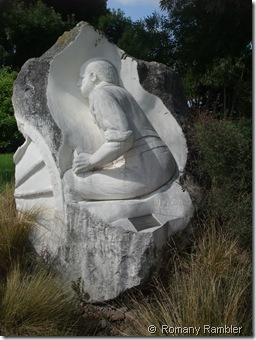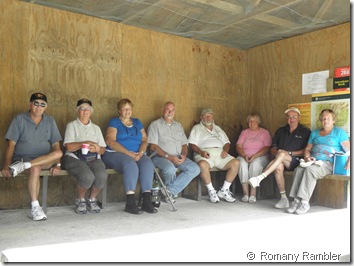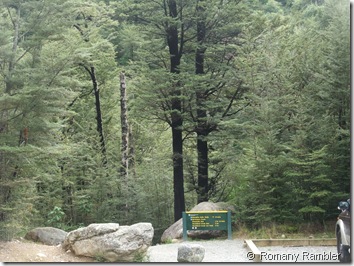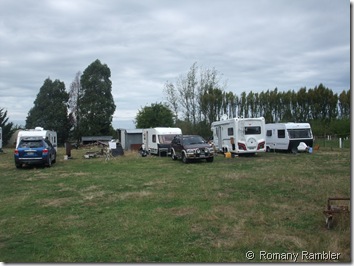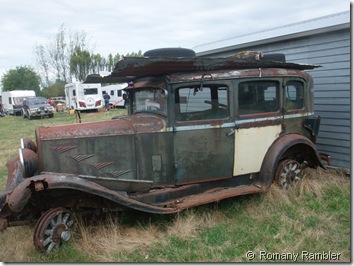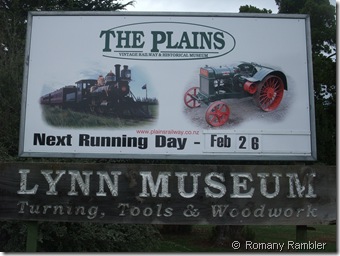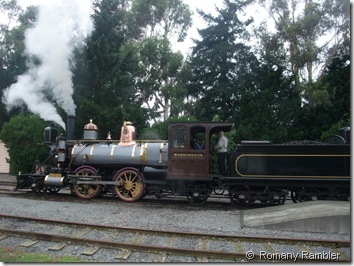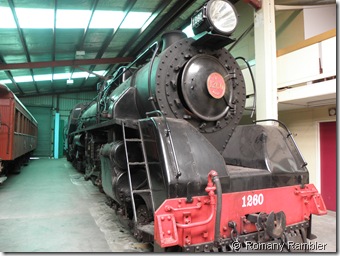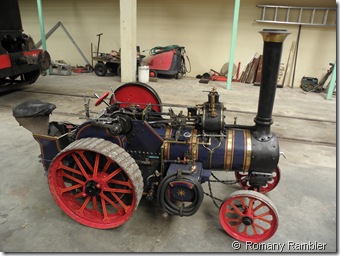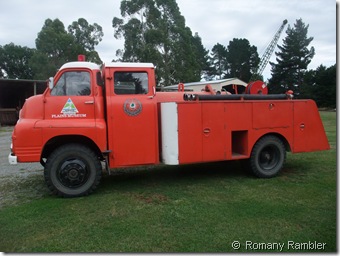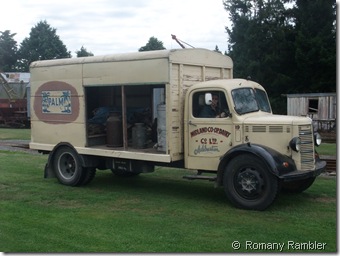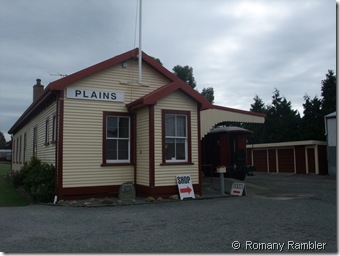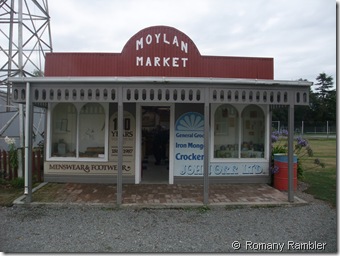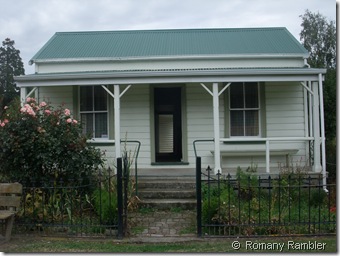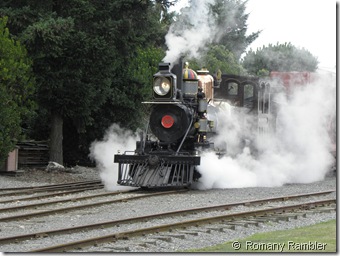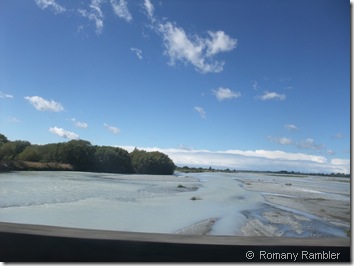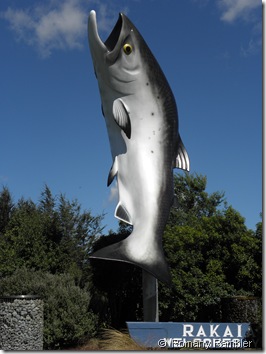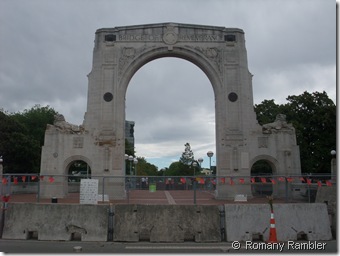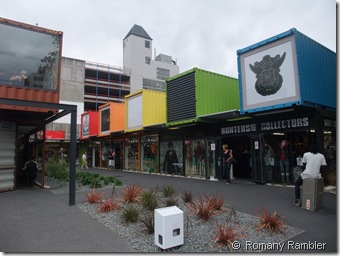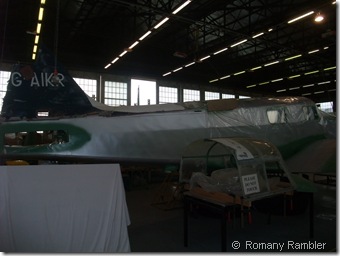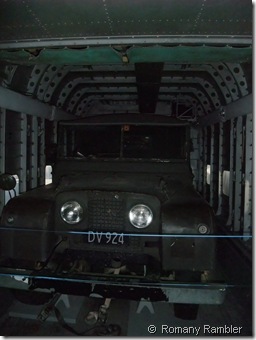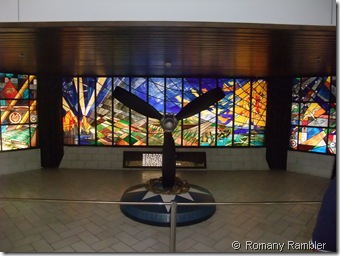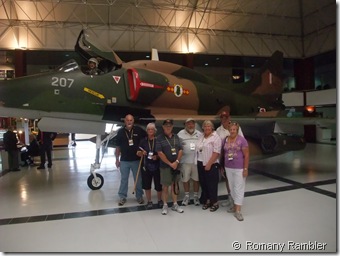Wednesday 29 February 2012
The story of 1066 – a New Zealand version
Tuesday 28 February 2012
Farewell to Ashburton, hello Geraldine
Time to hit the road again and say farewell to Ashburton. Our stay there was very pleasant, but off we go again.
It was an easy drive south down SH1, then across to Geraldine. This POP (park over property) had been recommended and we could really see why. We drove down the sweeping drive, lined with silver birch trees and pretty gardens edged with rocks, and found several motor-homes already in residence. Hope there is space for our four rigs, as we had phoned ahead to see if there was room available. Of course there was room, and one by one we were slotted into our spaces, and power cords switched on.
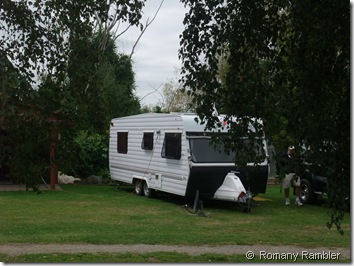 We are parked up on such pretty grounds
We are parked up on such pretty grounds
Our friendly hosts, David and Maureen, came out to welcome us, accompanied by their miniature poodle Tui. This cute little dog bounced through the open door into the back seat of our car before we had unclipped Muffy and taken her into the caravan. Don’t know who got the biggest shock from this unexpected encounter but Tui jumped straight back out again and both animals were looking rather wide eyed from their experience.
I spotted a hen house down at the end of the property. “Here, chook, chook”, I called, and they all came running from near and far from their large enclosure to see if I had any bread for them. They all seem to be different colours, and have lovely shiny plumage. Free range eggs are available for sale, so we will certainly be buying some for our morning bacon and egg breakfast.
With such a variety of different caravans and motor-homes parked up overnight, there is always something of interest to check out. Our men folk spent an enjoyable time discussing the finer points of a large 5th wheeler parked on the next site.
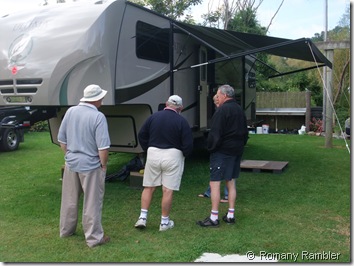 Checking out the 5th wheeler next door
Checking out the 5th wheeler next door
Geraldine has several interesting places to visit so we went our separate ways in the afternoon. Robin and Derek explored the Geraldine Vintage Car and Machinery Museum and Dot came with me to Lillia’s Lace Museum. More about these visits later.
Monday 27 February 2012
He didn’t listen to the GPS Unit
The GPS unit was programmed to take us to Methven, but Robin thought he knew better and didn’t follow the instructions, and merrily drove another way. “Do a U turn, do a U turn”, the voice on the unit insisted. So he did just that, the anonymous voice was happy again, and we eventually arrived in Methven. “Why do you want to go to Methven?”, our travelling companions wanted to know. “Just because we had never been there”, was the reply. We passed quite an assortment of livestock on the farmland on our drive, from the more usual sheep and cattle, to alpacas farmed for their fine fleece. Our next stop was the Rakaia Gorge, and driving down the steep hill we pulled into a lay by to look at the glorious view. Away in the distance was one of the two Rakaia Gorge bridges. While our cameras were clicking madly and we noticed a young couple struggling up the steep road on their heavily loaded bicycles – I don’t think they were having fun at all!
From here it was a short drive down to the river, and we could see the second bridge from this viewpoint – different construction methods have been used for each bridge. There goes another load of timber. Looking across the bank on the other side of the gorge the layers of different sediments are clearly visible.
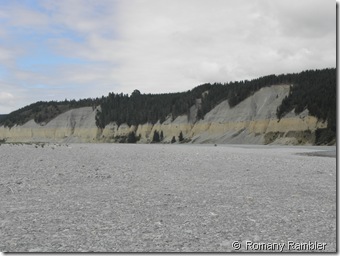 Different layers visible in the river bank
Different layers visible in the river bank
Our trip continued on to Staverley, the home of the famous Staverley Baking Company sausage roll – or so I read. Goodness knows what the proprietors of the Staverley Store thought when our cars pulled up and 8 people walked into the shop to ask for their special sausage rolls! We ordered coffees to wash the sausage rolls down and sat outside on the picnic tables to enjoy our morning tea.
This little speck in the middle of nowhere is typical of towns which previously thrived, then closed down. These days only the store and the church remain. In the picnic area adjacent to the shop is a statue carved by Allan Coleman “Honouring the pioneers of the foothills”.
After all those sausage rolls we still needed our lunch so we took a short drive out to Hakatere Conservation Park at the foot of Mount Sommers. The DOC hut was just the place for us to sit and eat our sandwiches.
This is a beautiful area and keen trampers can take several walks in the surrounding hills, anything from short walks to others from 6-9 hours hard slog. The Department of Conservation always provides an “Intentions Book” for trampers to list what route they are taking in case they fail to return. Beech trees were plentiful, and with their black trunks they look as if a fire has swept though the area. The black colouration is because the trees secrete honeydew, which unfortunately attracts huge quantities of wasps.
We arrived back at camp ready to put the kettle on, make a cuppa, sit down in the sunshine and relax. Our host restores old cars and has many dotted around his property in various stages of repair. In the morning we will pack up and move on, next stop Geraldine.
Sunday 26 February 2012
The Plains Vintage Railway – Tinwald, Ashburton
It must have been good luck, we think, for us to be staying in Ashburton the weekend the vintage trains were running. Several of our men are real train enthusiasts, and the ladies aren't adverse to a ride in a vintage train now and again. It was a bleak and chilly morning when we set off on the short drive down to Tinwald to find the Plains Vintage Railway and Historical Museum. We put our gold coin donation in the box and entered the gates.
What’s that? How exciting, it looks like steam today! The museum has three preserved locomotives and one vintage railcar to pull the vintage carriages, and it was the turn for this little beauty to take a turn today. The engine is a K88, built in 1877 by Rogers Locomotive Works, at New Jersey. After a productive working life, this poor little engine was scrapped, pushed over the side of the Oreti River and used as flood protection. In 1974 the engine was uncovered and moved to the Plains Railway Museum, and the slow process of restoration began. These days, the engine looks very smart with shiny green paint, brass fittings and a copper steam dome. We boarded one of the carriages for our 15 minute trip through the plains, and our $8 ticket entitled us to enjoy two rides during our stay.
The men took a trip through the engine shed. The huge JA1260 is a “local” and was built at Hillside Railway Workshops, Dunedin in 1952. By contrast, the miniature traction engine is very small indeed.
Back outside again we wandered around looking at some of the vast array of vintage trucks and engines. The basic Bedford Diesel Fire Engine from 1960 showed just how far technology has taken the fire engines of today.
Back in the “good old days” home milk delivery was the norm, and dairy factories were found in every town. The Midland Co-op Dairy Co used this Bedford in the 1950s right here in Ashburton.
The railway station on site was formerly the Chertsey Station, and was built in 1919. The Ashburton Jaycees relocated the building in 1976.
There is also a Pioneer Village with many buildings to wander through – everything from a church, cottage and shops from the era. We gazed through the windows at a shoe shop and marvelled at just how tiny those ladies shoes were. The chemist shop was interesting with all those pills and potions. and to keep the ladies amused there were displays of vintage washing machines and sewing machines.
Meanwhile, the K88 was getting up a head of steam for another trip up the line. Cameras were snapping at this wonderful sight. It must be time to climb aboard for our second ride of the day.
Moving south to Ashburton
Total Nights and Distance Travelled on Tour to Date = 13 Nights & 1193 Kms
Leaving the domain grounds at Tai Tapu we almost had a head on accident with a youth in a red car being closely pursued by a police car coming around the corner. Luckily we all managed to stop just in time – but we did wonder the reason for the close pursuit. No hills today as our drive down State Highway One took us through the Canterbury Plains. We drove through the little village of Dunsandal, made famous by Ken Avery and his Kiwi classic song “By the dog dosing strip in Dunsandal”. To those who haven’t experienced this piece of vintage Kiwiana, the song refers to the days gone by when dog owners were required to take their dogs to specified areas to be dosed for hydatids.
We drove over the Rakaia River Bridge, the longest highway bridge in New Zealand at 1.8km long. At that length it seemed to go on, and on, and on. The Rakaia River is known as a “braided river”. A braided river is one that, over some part of its length, flows in multiple, mobile channels across a gravel floodplain.
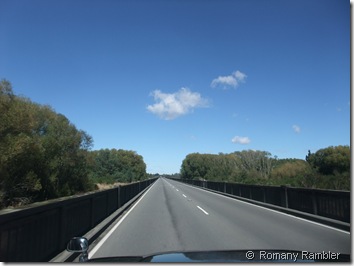 Travelling over the longest highway bridge in NZ
Travelling over the longest highway bridge in NZ
Rakaia is well known for its salmon and trout fishing, and has this giant salmon statue standing at 12 metres high on SH1 to entice keen fishermen to try their luck.
It was then just a short run to Ashburton (the town was named in honour of the 2nd Baron Ashburton). We are staying at a rural POP and have a couple of pet sheep to keep us company. We have to be careful as they are used to getting their own way and can become quite a nuisance as they are not at all afraid of people. Our host has a large assortment of old vehicles which he plans to restore and our men-folk were delighted when told that he will take them around his workshop sometime.
Romany Rambler: Travelled 20,790Km; 358 Total Nights
Saturday 25 February 2012
Christchurch City – the Red Zone
Like all New Zealanders, we had seen television pictures of the centre of Christchurch after the devastating February earthquake last year. Buildings in ruins, and later on the bulldozers were sent in to demolish many of these buildings. On our last day in Christchurch we went to see for ourselves, and commented that the pictures on TV do not do justice to the huge scale of the damage. The heart of the central business district is cordoned off, buildings are empty and boarded up and empty spaces show where other buildings once stood. The Bridge of Remembrance is fenced off and the damage is plain to see.
Away in the distance we could just make of the remains of Christchurch Cathedral, which suffered considerable damage and is unlikely to be rebuilt. The spire came crashing down and the stained glass windows were destroyed. The Cathedral is considered to be the heart of the city and once stood proudly in Cathedral Square.
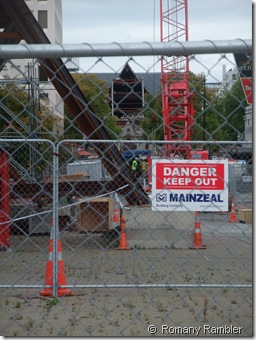 Christchurch Cathedral in the distance
Christchurch Cathedral in the distance
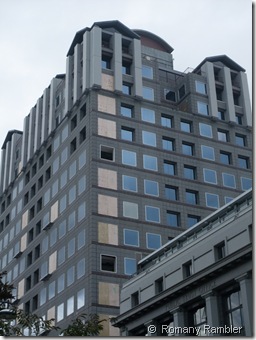 Multi storey building boarded up
Multi storey building boarded up
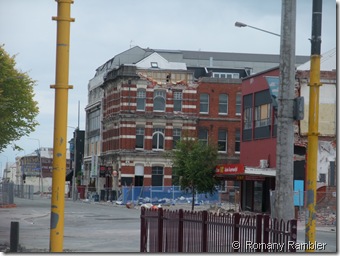 Brick building severely damaged
Brick building severely damaged
Many of the empty buildings have “cleared” signs spray painted on the windows showing how the whole of the central city was searched and cleared after the earthquake by urban Search and Rescue teams. Many teams came from overseas to help with the recovery.
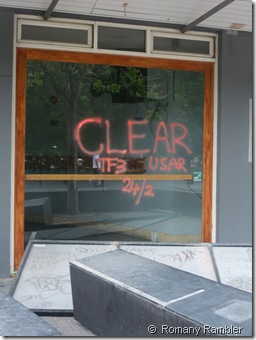 Building cleared by American Search and Rescue team
Building cleared by American Search and Rescue team
A new “shopping centre” constructed of brightly painted containers has brought some life back into the city. People now have an area to shop, or have a coffee with friends, and some businesses are able to start trading again. This area was buzzing with workers and sightseers alike.
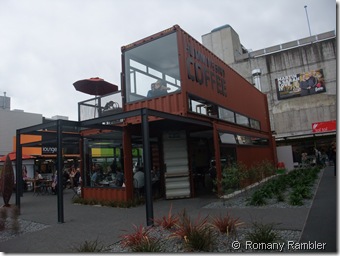 New shops made from steel containers
New shops made from steel containers
Even though it was rather sobering to walk around the cordoned off area and look through the chain link fence, we agreed that it was beneficial to give us a greater understanding of the damage suffered here.
Air Force Museum, Wigram, Christchurch
What’s to see at the Air Force Museum? 28 classic aircraft for a start, many aircraft being restored, plus much, much more. We started our visit with a guided “behind the scenes” Restoration and Reserve Collection tour. “The restoration demands the preservation of the maximum amount of the original aircraft”, I read. Where possible, parts are sourced from scrapped aircraft, the correct type of timber is sourced from overseas, and metal pieces are meticulously fashioned.
Britain sent several Vickers Vildebeest Biplanes to New Zealand during WW11, and none survive today. The restorers were working off drawings making all the pieces to put the frame together. When this huge job is finally complete this will be the only aircraft of this type in the world.
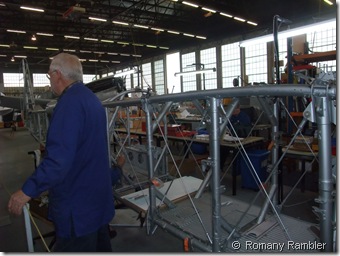 Working on the frame of Vickers Vildebeest Biplane
Working on the frame of Vickers Vildebeest Biplane
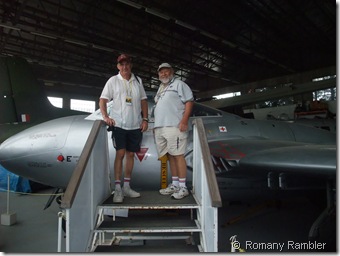 Derek and Robin on a De Havilland Vampire
Derek and Robin on a De Havilland Vampire
Aircraft big and small are slotted in to place in this hanger. The smaller Strikemaster jet training aircraft, and the Westland Wasp Navy Chopper look tiny alongside the huge Bristol Freighter, with an Army Jeep still in the hold.
We walked right through the Hawker Siddley Andover, a multi roled plane used to carry servicemen, freight and vehicles, It was also used for parachute training. The trainees sat with their parachutes in the seats with netting, their chutes were clipped on to the overhead rail, and one by one they moved towards the open door and jumped. Any who hesitated at this point failed the course.
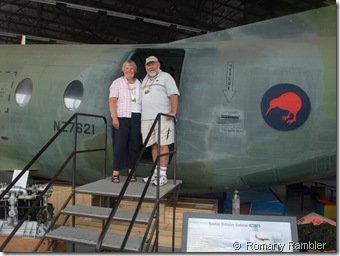 Luckily we didn’t have to jump
Luckily we didn’t have to jump
It was an eerie experience walking back into the main exhibition hall. We could see the planes on display through the dim lighting while over the speakers came the haunting sound of the song, “Coming home on a wing and a prayer”. So many of the Air Force boys must have done just that during the war years.
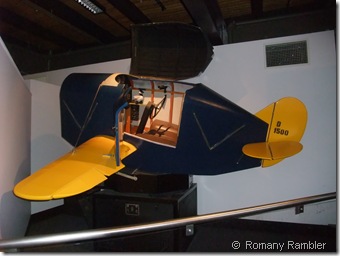 Link Flight Trainer used during WW11
Link Flight Trainer used during WW11
The Memorial Alcove is an enduring tribute to the thousands of New Zealanders who gave their lives in the defence of their country in theatres of air operations around the world. The window was made by stained glass artist Rena Jarowsewitch and Official RNZAF Artist Wing Commander Maurice Conley. The bent propeller is a reminder of aircraft which took the lives of servicemen and women during the war.
